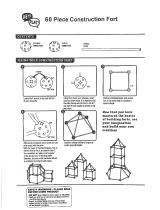
Introduction
DRM100, Rev. 0
10 Freescale Semiconductor
1.2 Freescale Digital Signal Controller Advantages and Features
The Freescale MC56F80xx family is well suited to digital motor control, combining the DSP’s calculation
capability with the MCU’s controller features on a single chip. These hybrid controllers offer many
dedicated peripherals such as pulse width modulation (PWM) modules, analog-to-digital converters
(ADC), timers, communication peripherals (SCI, SPI, I
2
C), and on-board Flash and RAM.
The MC56F80xx family members provide the following peripheral blocks:
• One PWM module with PWM outputs, fault inputs, fault-tolerant design with dead time insertion,
supporting both centre-aligned and edge-aligned modes
• 12-bit ADC, supporting two simultaneous conversions; ADC and PWM modules can be
synchronized
• One dedicated 16-bit general purpose quad timer module
• One serial peripheral interface (SPI)
• One serial communications interface (SCI) with LIN slave functionality
• One inter-integrated circuit (I
2
C) port
• On-board 3.3V to 2.5V voltage regulator for powering internal logic and memories
• Integrated power-on reset and low voltage interrupt module
• All pins multiplexed with general purpose input/output (GPIO) pins
• Computer operating properly (COP) watchdog timer
• External reset input pin for hardware reset
• JTAG/On-Chip Emulation (OnCE™) module for unobtrusive, processor-speed-independent
debugging
• Phase-locked loop (PLL) based frequency synthesizer for the hybrid controller core clock, with
on-chip relaxation oscillator
The two-phase SR control benefits greatly from the flexible PWM module, fast ADC, quad timer module
and interrupt controller module.
The PWM block has the following features:
• Three complementary PWM signal pairs, six independent PWM signals (or a combination)
• Complementary channel operation features
• Independent top and bottom dead time insertion
• Separate top and bottom pulse width correction via current status inputs or software
• Separate top and bottom polarity control
• Edge-aligned or centre-aligned PWM reference signals
• 15-bit resolution
• Half-cycle reload capability
• Integral reload rates from one to sixteen periods
• Mask/swap capability
• Individual, software-controlled PWM output
• Programmable fault protection
Table 1-1. Memory Configuration
Memory Type MC56F8013 MC56F8023
Program Flash 16 KByte 32 KByte
Unified Data/Program RAM 4 KByte 8 KByte






















